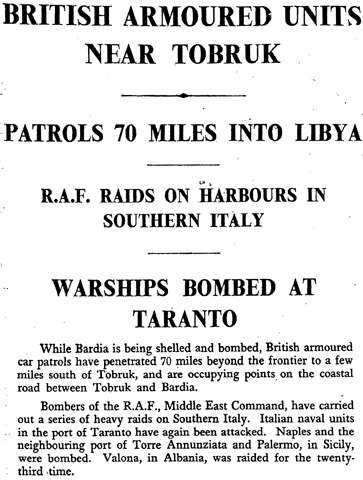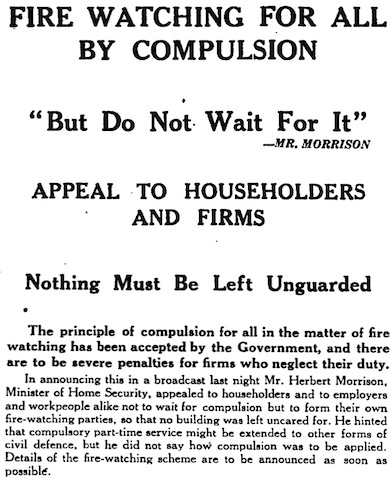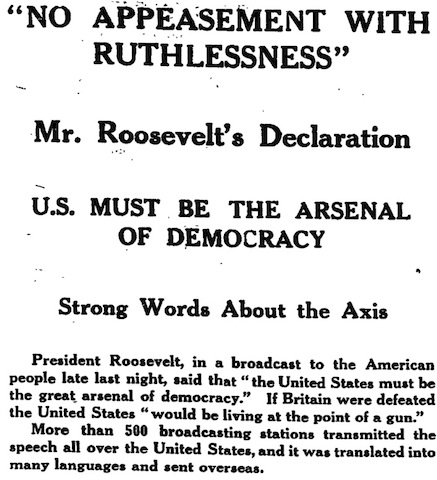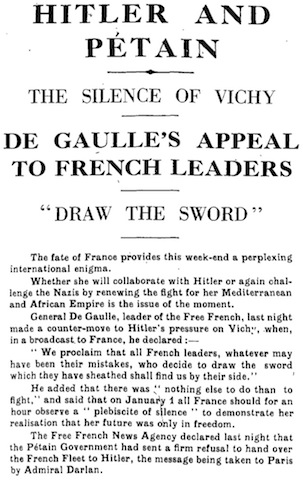Thursday, 2 January 1941
The Mediterranean theatre of war has seen a lot of action in recent days, as these headlines from The Times (4) show. While the Italian outpost at Bardia is besieged from land, sea and air, British armoured units are approaching Tobruk, 70 miles to the west. On Monday night, Italian warships at Taranto were bombed […]






